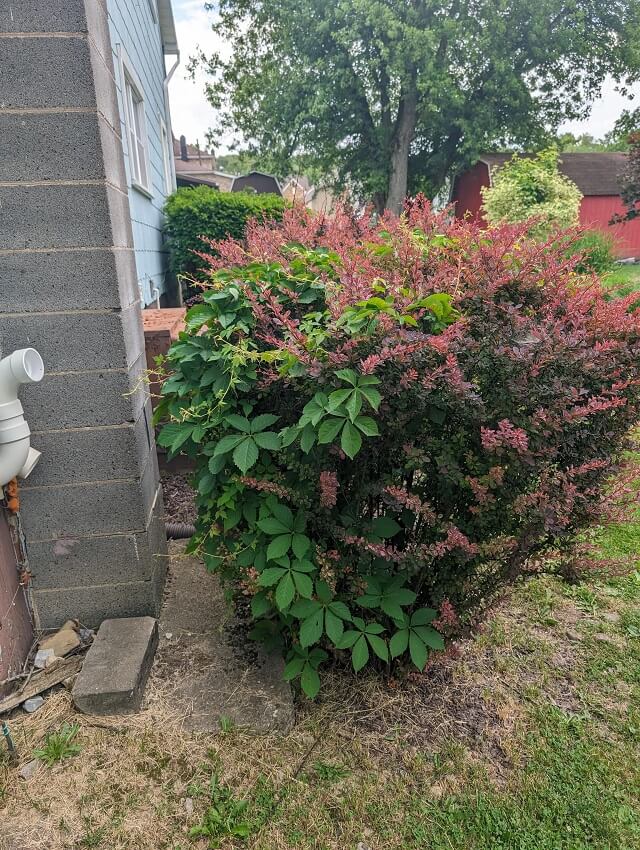One homeowner took to Reddit to ask the subreddit r/WhatIsThisPlant: "Why is my bush now growing vines?"
In photos accompanying their question, small tendrils of a vine could be seen curling around the more established branches of their bush. It looked like two bushes fighting for the same space.

"Are the vines growing off my bush invasive? Or is this part of the growing process?" They clarified that they didn't know exactly what bush it was, but they were fairly certain it was a 5-year-old barberry.
One commenter jumped in immediately with some surprising news. "If you are in the US this is very ironic," they said. "Virginia Creeper is a NATIVE plant which is also a host plant for some native insect species. Barberry is a horribly invasive bush."
In summary, they concluded: "Virginia Creeper is an aggressive species. Not invasive. Your bush is an invasive bush."
"Poor little native just trying to do its job, clean the air, make some berries for the birds in the fall," one person joked.
Invasive plants like this barberry often hide in plain sight, including some common names that many gardeners don't realize are invasive. For example, the seemingly innocent English ivy has been known to strangle native plants and even entire trees; innocuous bamboo can grow so quickly and aggressively that it bursts through cement walls.
And because many homeowners — and even city officials — don't know which species are invasive, this can lead to the accidental unleashing of a nearly indomitable ecological foe.
"This time on PLANT WARS!!! Virginia creeper, a native, fights a desperate battle against its invasive neighbor, Barberry. With righteous indignation, it aggressively reclaims its territory and its beloved home!" one person wrote, much to everyone's amusement.
🗣️ How often will you be gardening this summer?
🔘 Every day 🥗
🔘 At least once a week 🥕
🔘 At least once a month 🌱
🔘 I don't garden 🚫
🗳️ Click your choice to see results and speak your mind
Based on the species, experts recommend a variety of approaches for removing invasives in a non-toxic way, from pruning them to uprooting them and drying them out in the sun.
For homeowners like this one, the best solution is to consult a list of local native plants and use those to beautify your home instead. Not only are natives easier and cheaper to maintain, but they also nourish local pollinators and wildlife — no need for any plant wars.
Join our free newsletter for easy tips to save more, waste less, and help yourself while helping the planet.









